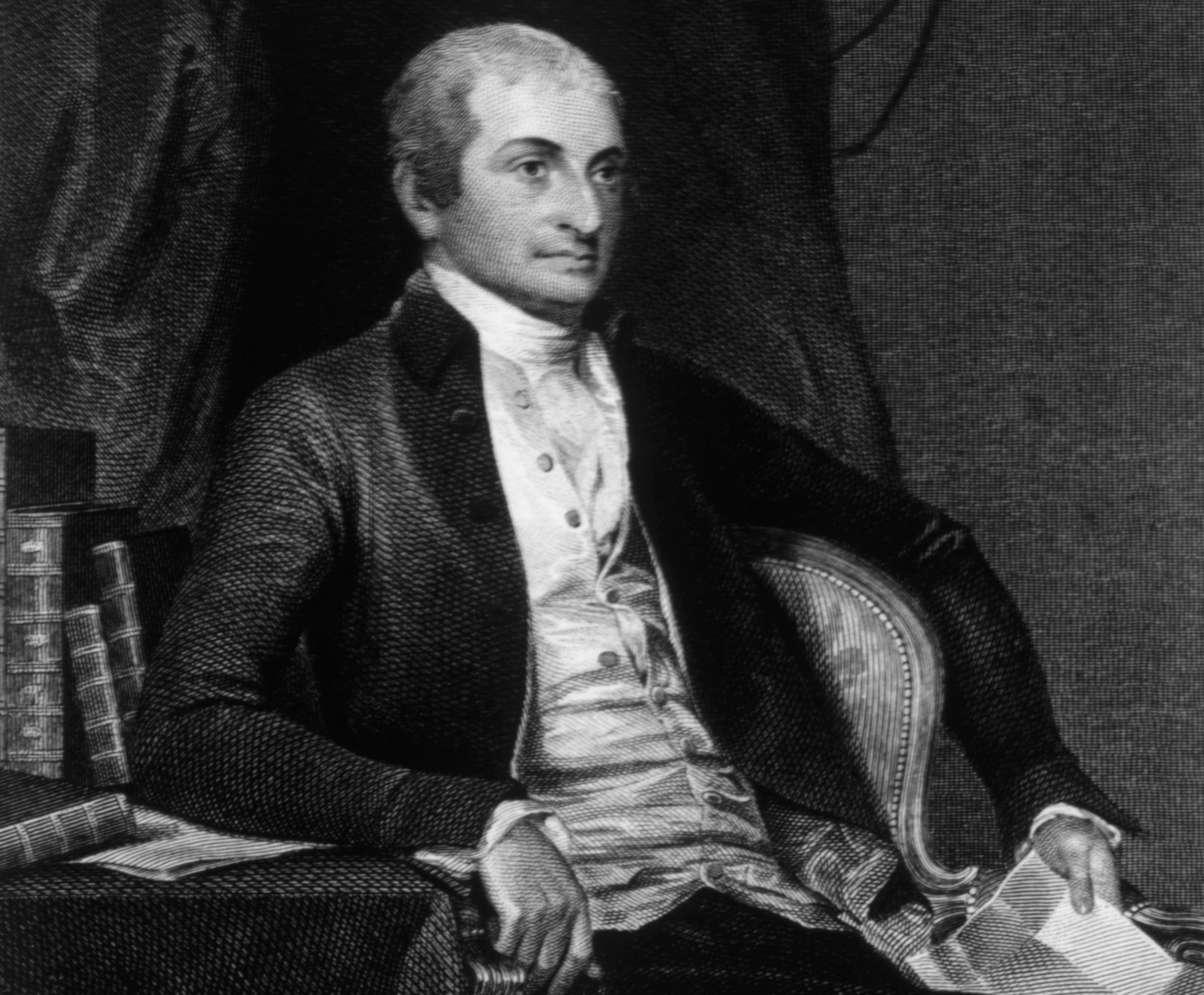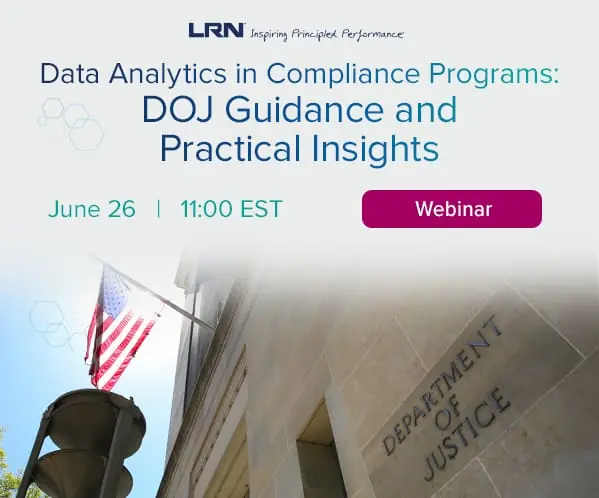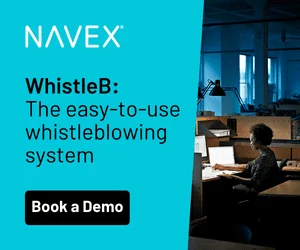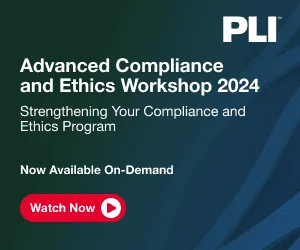This article was republished with permission from Tom Fox’s FCPA Compliance and Ethics Blog.
Today we celebrate leadership in general and ethical leadership, specifically in the person of John Jay. He was not one of the well-known founding fathers; nevertheless, he was a key participant in the founding of the American Republic, from the days of the Continental Congress up through the passage of the U.S. Constitution and into the first administration of President Washington. On this day in 1778, Jay was elected President of the Continental Congress. Jay, who graduated from King’s College (now Columbia University) at the age of 19, was a prominent figure in New York State politics from an early age. He served as one of the U.S. representatives who negotiated the Treaty of Paris, ending the Revolutionary War with England.
He served as Foreign Secretary under the Articles of Confederation and was one of the authors of the Federalist Papers with Alexander Hamilton and James Madison. After turning down an offer from George Washington to be the first Secretary of State, he later became the first Chief Justice of the Supreme Court. Jay ended his public service with two terms as the Governor of New York State. It would certainly seem more than enough for one man, but Jay was typical of the character of the founding fathers.
Ethical leadership is absolutely mandatory to have a successful compliance program, whether it is based upon the Foreign Corrupt Practices Act (FCPA) or the UK Bribery Act. Senior management must not only be committed to doing business in compliance with these laws, but they must also communicate these commitments down to the organization. Leadership is not limited only to senior management within an organization, however. Tone at the top begets tone in the middle, which begets tone at the bottom. At each rung, there is the need for compliance leadership. In an article in the Harvard Business Review entitled “Leadership is a Conversation,” authors Boris Groysberg and Michael Slind discuss how to improve employee engagement in today’s “flatter, more networked organizations.”
The authors posit that the issue of how leaders handle communications within their organizations is as important as the message. They believe that the process should be more dynamic, more nuanced and “conversational.” Building on this concept, they suggest a model of leadership that they call “organizational conversation,” which resembles ordinary person-to-person conversations. They believe that this model has several advantages, including that it allows a large company to function like a small one and it can enable leaders to “retain or recapture some of the qualities…that enable startups to outperform better established rivals.” The authors have found four elements of organizational conversation that “reflect the essential attributes of an interpersonal conversation.” They are: intimacy, interactivity, inclusion and intentionality.
Intimacy: Getting Close
Here the authors appear to focus on two words: listening and authenticity, recognizing that physical proximity may not always be feasible, but emotional or mental proximity is required. They advise leaders to “step down from their corporate perches and then step up to the challenge of communicating personally and transparently with their people.” This technique shifts the focus of change from a top-down hierarchical model to a “bottom-up exchange of ideas.”
Interactivity: Promoting Dialogue
Interactivity should make a conversation open and more fluid. You can obtain this by talking with and not just talking to an employee. The purpose of interactivity builds upon the first prong of intimacy. The authors believe that efforts to close the gap between employees will flounder if both tools are not in place along with institutional support that gives employees the freedom and courage to speak up. The authors believe that social media can be a useful tool to help foster such interactivity, but care must be taken to ensure that managers do not simply use social media as another megaphone. The authors suggest that more than just social media is required; something extra is needed: social thinking.
Inclusion: Expanding Employees’ Roles
Following on intimacy is inclusion; intimacy should force a leader to get closer to employees, while inclusion challenges the employee to play a greater role in the communication process. Inclusion expands on interactivity by enabling employees to put forward their ideas “rather than simply parrying the ideas that others present.” Clearly this is the prong that brings employee engagement into the communication process by calling on employees to “generate the content that makes up a company story.” Employees who become committed to a message can become the best brand ambassadors that a company can ever hope to have on its payroll.
Intentionality: Pursuing an Agenda
While the first three prongs of the authors’ model focus on opening up the flow of communication, intentionality is designed to bring a measure of closure to the process. The goal here is to have voices merge into a single vision of what the company’s communication stands for. In other words, the conversation should reflect a “shared agenda that aligns with the company’s strategic objectives” that will allow employees to “derive a strategically relevant action from the push and pull of discussion and debate.” The role here for leaders is to “generate consent rather than commanding assent” for a strategic objective. The authors believe that this enables employees at the top, middle and bottom to “gain a big-picture view of where their company stands” on any issue which has gone through the process.
John Jay Scholars at Columbia University honor Jay’s legacy today. I think it also speaks to the work that compliance practitioners play in moving the ball of greater compliance forward. Indeed, I find that all involved in the compliance ecosystem have a part in moving the ball forward. So whether you are a vendor with a software product, a lawyer penning a client alert, a Chief Compliance Officer or even a humble commentator, we all celebrate your role as well today.
This publication contains general information only and is based on the experiences and research of the author. The author is not, by means of this publication, rendering business advice, legal advice or other professional advice or services. This publication is not a substitute for such legal advice or services, nor should it be used as a basis for any decision or action that may affect your business. Before making any decision or taking any action that may affect your business, you should consult a qualified legal advisor. The author, his affiliates and related entities shall not be responsible for any loss sustained by any person or entity that relies on this publication. The author gives his permission to link, post, distribute or reference this article for any lawful purpose, provided attribution is made to the author. The author can be reached at tfox@tfoxlaw.com.



 Thomas Fox has practiced law in Houston for 25 years. He is now assisting companies with FCPA compliance, risk management and international transactions.
He was most recently the General Counsel at Drilling Controls, Inc., a worldwide oilfield manufacturing and service company. He was previously Division Counsel with Halliburton Energy Services, Inc. where he supported Halliburton’s software division and its downhole division, which included the logging, directional drilling and drill bit business units.
Tom attended undergraduate school at the University of Texas, graduate school at Michigan State University and law school at the University of Michigan.
Tom writes and speaks nationally and internationally on a wide variety of topics, ranging from FCPA compliance, indemnities and other forms of risk management for a worldwide energy practice, tax issues faced by multi-national US companies, insurance coverage issues and protection of trade secrets.
Thomas Fox can be contacted via email at tfox@tfoxlaw.com or through his website
Thomas Fox has practiced law in Houston for 25 years. He is now assisting companies with FCPA compliance, risk management and international transactions.
He was most recently the General Counsel at Drilling Controls, Inc., a worldwide oilfield manufacturing and service company. He was previously Division Counsel with Halliburton Energy Services, Inc. where he supported Halliburton’s software division and its downhole division, which included the logging, directional drilling and drill bit business units.
Tom attended undergraduate school at the University of Texas, graduate school at Michigan State University and law school at the University of Michigan.
Tom writes and speaks nationally and internationally on a wide variety of topics, ranging from FCPA compliance, indemnities and other forms of risk management for a worldwide energy practice, tax issues faced by multi-national US companies, insurance coverage issues and protection of trade secrets.
Thomas Fox can be contacted via email at tfox@tfoxlaw.com or through his website 







